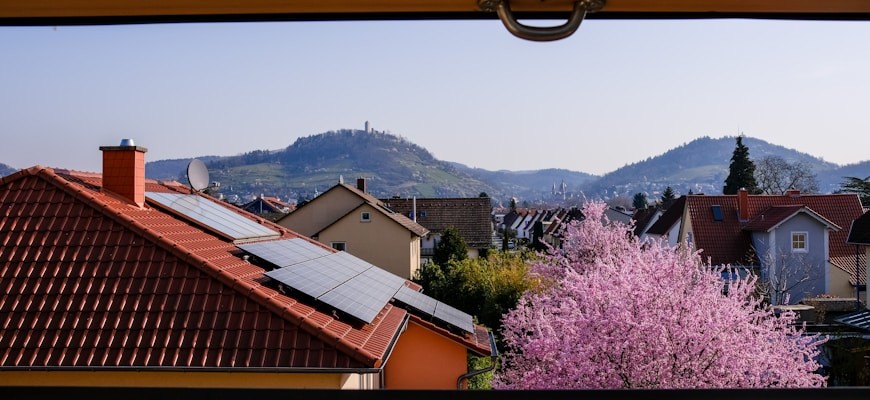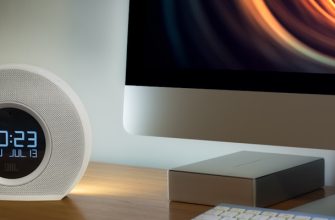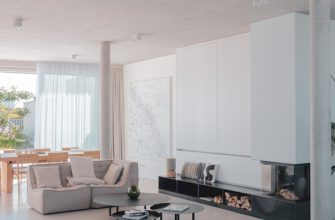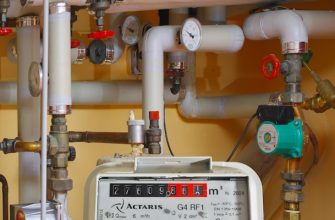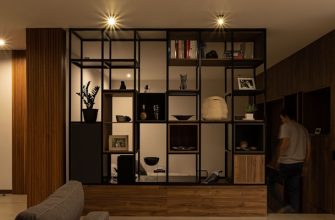- Enhancing Indoor Air Quality with Smart Sensors
- The Role of IoT in Maintaining Fresh Air Circulation
- Smart Ventilation Systems: A Breath of Fresh Air
- Air Purification Technologies for Healthier Living Spaces
- Integration of Smart Home Devices for Optimal Air Quality
- Transforming Homes into Oasis: The Future of Fresh Air Solutions
Enhancing Indoor Air Quality with Smart Sensors
In the modern era, indoor air quality has become a significant concern for households and businesses alike. Smart sensors play a crucial role in enhancing the quality of the air within living spaces. These innovative devices continuously monitor various air quality parameters, such as humidity, temperature, and levels of pollutants, ensuring a healthier environment.
- Real-time Monitoring: Smart sensors provide real-time data on air quality, allowing users to make informed decisions about ventilation and air purification.
- Automated Adjustments: Many smart home systems can automatically adjust HVAC settings based on sensor readings, optimizing air circulation and filtration.
- Alerts and Notifications: Users receive alerts when air quality falls below acceptable levels, prompting immediate action to improve conditions.
- Integration with Other Devices: Smart sensors can be integrated with air purifiers and dehumidifiers, creating a cohesive system that maintains optimal indoor air quality.
Investing in smart sensors not only enhances indoor air quality but also contributes to overall well-being. Cleaner air leads to better respiratory health, improved sleep quality, and increased productivity levels. The adoption of smart technology in homes allows for seamless management of air quality, making it an essential component of modern living.
Moreover, the data collected by smart sensors can provide valuable insights into patterns and trends related to indoor air quality. This information empowers users to make proactive changes, such as increasing ventilation during peak pollution times or adjusting humidity levels to reduce allergens. By embracing smart technology, individuals can significantly improve their quality of life and create a healthier living environment.
The Role of IoT in Maintaining Fresh Air Circulation
The Internet of Things (IoT) plays a crucial role in enhancing air quality within smart homes. By utilizing interconnected devices, homeowners can effectively maintain optimal fresh air circulation throughout their living spaces. Smart sensors monitor indoor air conditions, detecting levels of pollutants, humidity, and temperature.
These sensors can communicate with ventilation systems and air purifiers, automatically adjusting their operation based on real-time data. For instance, when indoor air quality deteriorates, the IoT system activates ventilation to bring in fresh outdoor air, ensuring a constant flow of clean air. This seamless integration of technology not only improves comfort but also promotes better health by reducing allergens and harmful particles.
- Real-time monitoring of air quality metrics, such as CO2 levels and volatile organic compounds (VOCs).
- Automated adjustments to HVAC systems to optimize air circulation.
- Remote access through mobile applications, allowing users to control air quality settings from anywhere.
- Integration with weather forecasts to adjust air circulation based on outdoor conditions.
Moreover, IoT devices can provide valuable insights and analytics on air quality trends over time. This data enables homeowners to make informed decisions about their living environment, enhancing overall well-being. As smart home technology continues to evolve, the role of IoT in maintaining fresh air circulation becomes increasingly significant, making modern living not only more convenient but also healthier.
Smart Ventilation Systems: A Breath of Fresh Air
Smart ventilation systems are revolutionizing the way fresh air is circulated in modern homes. These advanced solutions ensure optimal indoor air quality while maximizing energy efficiency. By integrating smart home technology, ventilation systems can monitor air quality in real-time, adjusting airflow and filtration based on environmental conditions.
- Automatic adjustments: Smart ventilation systems automatically adapt to changes in humidity and air quality, ensuring a constant supply of fresh air.
- Energy efficiency: These systems optimize energy consumption by using sensors to determine when ventilation is necessary, reducing unnecessary heating or cooling.
- Remote control: Homeowners can manage their ventilation systems through smartphone apps, allowing for convenient adjustments from anywhere.
- Integration with other smart devices: Smart ventilation can work alongside other smart home technologies, such as smart thermostats and air purifiers, to create a comprehensive indoor climate solution.
By effectively removing pollutants and ensuring a steady flow of clean air, smart ventilation systems contribute significantly to improved health and well-being. They not only enhance comfort but also support a sustainable lifestyle by reducing energy consumption.
The ability to control ventilation remotely adds an extra layer of convenience, allowing users to maintain a fresh atmosphere even when they are away from home. Additionally, the integration of smart ventilation with IoT devices streamlines home automation, creating a seamless experience that enhances the quality of life.
In summary, smart ventilation systems play a crucial role in modern smart homes by providing fresh air, improving indoor air quality, and promoting energy efficiency. As technology continues to evolve, the benefits of these systems will only become more pronounced, making them an essential component of any smart living environment.
Air Purification Technologies for Healthier Living Spaces
Air purification technologies play a crucial role in ensuring healthier living spaces within modern smart homes. These innovations enhance indoor air quality, reducing pollutants and allergens that can negatively impact well-being.
Various systems are employed in smart homes to facilitate effective air purification. These include:
- HEPA Filters: High-Efficiency Particulate Air filters capture a significant percentage of airborne particles, ensuring that dust and allergens are effectively removed from indoor environments.
- Activated Carbon Filters: These filters absorb odors and volatile organic compounds (VOCs), contributing to a fresher atmosphere in homes.
- UV-C Light Technology: Ultraviolet light is utilized to eliminate bacteria and viruses, promoting a healthier living space.
- Ionic Air Purifiers: These devices release negatively charged ions, which bind with airborne particles, causing them to settle and reduce pollution levels.
Integrating these air purification technologies into a smart home system allows for real-time monitoring and control. Homeowners can adjust settings remotely through mobile applications, ensuring optimal air quality at all times. Additionally, smart sensors can detect changes in air quality, automatically activating purifiers when needed.
Moreover, the combination of air purification and smart home automation contributes to energy efficiency. Many modern air purifiers are designed to operate at lower power levels while maintaining high performance, thereby reducing energy consumption without compromising air quality.
In conclusion, leveraging air purification technologies in smart homes significantly enhances the quality of life. By ensuring cleaner, fresher air, these innovations not only promote health but also create a more comfortable living environment.
Integration of Smart Home Devices for Optimal Air Quality
Integrating smart home devices for optimal air quality is essential in creating a healthy living environment. Smart home technology enhances air quality by utilizing interconnected devices that monitor and improve indoor conditions. These devices work collaboratively to ensure that the air within homes remains fresh and clean.
- Smart Air Purifiers: Equipped with advanced filtration systems, smart air purifiers eliminate pollutants, allergens, and harmful particles from the air. They can be controlled remotely and provide real-time air quality updates.
- Smart Thermostats: These devices regulate temperature and humidity levels, contributing to better air quality. By maintaining optimal conditions, smart thermostats help prevent mold growth and enhance comfort.
- Smart Ventilation Systems: These systems ensure proper airflow and circulation within homes. By integrating with other smart devices, they can adjust ventilation based on air quality readings, promoting a healthier environment.
- Smart Sensors: Air quality sensors monitor levels of pollutants and notify homeowners of any significant changes. By providing data on VOCs, CO2, and particulate matter, these sensors help manage indoor air quality effectively.
- Smart Humidifiers and Dehumidifiers: Maintaining optimal humidity levels is crucial for air quality. Smart humidifiers and dehumidifiers adjust moisture levels based on environmental conditions, helping to prevent respiratory issues.
The integration of these smart devices not only enhances air quality but also contributes to overall well-being. By leveraging technology, homeowners can create a living space that promotes health and comfort. The synergy between smart home devices ensures that air quality is continuously monitored and improved, leading to a more enjoyable and healthier lifestyle.
Transforming Homes into Oasis: The Future of Fresh Air Solutions
In the modern era, the pursuit of a healthy lifestyle has become more important than ever. As urban areas expand and pollution levels rise, creating a sanctuary at home is essential. Smart home technologies play a pivotal role in transforming living spaces into fresh air oases. These innovations enhance indoor air quality, allowing residents to breathe easier and enjoy a more comfortable environment.
Fresh air solutions, integrated into smart home systems, utilize advanced sensors and automated controls to monitor and regulate air quality. By continuously assessing factors such as humidity, temperature, and pollutant levels, these systems ensure that homes remain comfortable and healthy. The ability to remotely control ventilation and air purification units adds an extra layer of convenience, enabling users to maintain optimal conditions even when away from home.
- Air Purifiers: Equipped with HEPA filters, these devices capture airborne particles, allergens, and pollutants, significantly improving indoor air quality.
- Smart Ventilation: Automated ventilation systems intelligently adjust airflow based on real-time air quality data, ensuring a continuous supply of fresh air.
- Humidity Control: Maintaining proper humidity levels is crucial for comfort and health. Smart dehumidifiers and humidifiers work seamlessly to achieve this balance.
- Integrated Systems: Many smart home setups allow for the integration of various air quality devices, providing a holistic approach to maintaining a fresh and healthy living space.
As technology continues to advance, the future of fresh air solutions within smart homes looks promising. Innovations in artificial intelligence and machine learning will enable even more sophisticated air quality management systems. These systems will not only react to changes in the environment but also predict and adapt to users’ needs, creating personalized air quality experiences.
In conclusion, transforming homes into oases of fresh air is not just a luxury; it is becoming a necessity. With the rise of smart home technologies, achieving a high quality of life through improved air quality is within reach for everyone. By embracing these innovations, individuals can ensure that their living spaces remain healthy, comfortable, and conducive to well-being.
